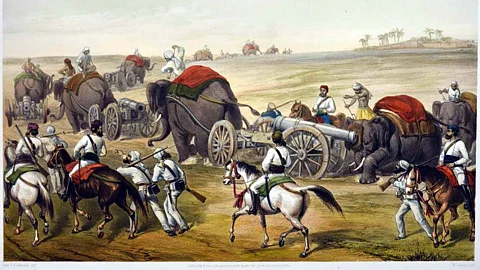
- HOMEGROWN WORLD
- #HGCREATORS
- #HGEXPLORE
- #HGVOICES
- #HGSHOP
- CAREERS
- ABOUT US
- CONTACT US

Across any flour ad you might come across, the humble chapati or roti is cast as a symbol of sustenance, labour and livelihood. It is elevated into a metaphor: fuel for bodies, a gesture of care and nourishment, and an idea of home. It’s the kind of poetic exaggeration we’ve come to expect from all its media depictions — a simple flatbread made to carry the weight of emotion, energy, even empowerment. But more than a century before, there was a moment in history when the chapati, in all its simplicity, did something even stranger.
In the early months of 1857, just prior to the outbreak of the Great Rebellion in India, a most curious phenomenon swept across villages of North and Central India. Plain, unmarked chapatis began appearing at doorsides, in police stations, and in the hands of village watchmen. Recipients, often without question, would bake fresh batches and pass them on to the next village. Soon, thousands of these flatbreads were circulating nightly across hundreds of miles, faster than the British mail system, terrifying colonial officials.
The first official report came from Mark Thornhill, magistrate at Mathura, who noted chapatis traversing some 300 kilometres in a single night between villages in regions like Avadh, Rohilkhand, and Delhi. Nobody had signed the chapatis; no inscriptions, no codes — there was only the bread itself. British authorities inspected the chapatis for hidden messages but found none. The mystery deepened when those questioned — often chowkidars or peasants, insisted they knew nothing beyond being given a few chapatis and instructed to carry them on.
Rumours ran wild across villages and cantonments, morphing with each retelling. Some British officials suspected it was a secret code or chain‑letter in edible form, signaling rebellion. Others speculated that it formed part of a nationalist network, or that tokens like lotus flowers or even goat flesh were also circulated as symbolic signals. Indian communities themselves were equally mystified; some believed not passing it on might trigger supernatural consequences or British reprisals. It had become a self‑perpetuating ritual steeped in fear and obedience.
To this day, modern historians remain divided on what the chapati movement truly represented. One theory suggests it was a crude form of psychological warfare, a deeply successful ploy designed merely to unnerving the British by demonstrating coordination and relentlessness without revealing intent. Another argues it began as a humanitarian chain delivering food to cholera‑affected regions, but as it spread wildly, its original meaning faded, leaving only anxiety and speculation in its wake.
Whatever the original motive, the chapatis became an atmospheric precursor to the rebellion that erupted in Meerut on 10 May 1857, more than a month after the movement first appeared. Historians suggest this mystery helped build an undercurrent of latent resistance; a network of cooperation, even if the participants were unwitting. In the sheer absurdity and secrecy of its effect, the chapati movement unsettled the machinery of empire. It sparked a subtle shift in consciousness provoking questions, spreading unease, and, in their own unassuming way, nudging a scattered people toward the first murmurings of collective dissent.
